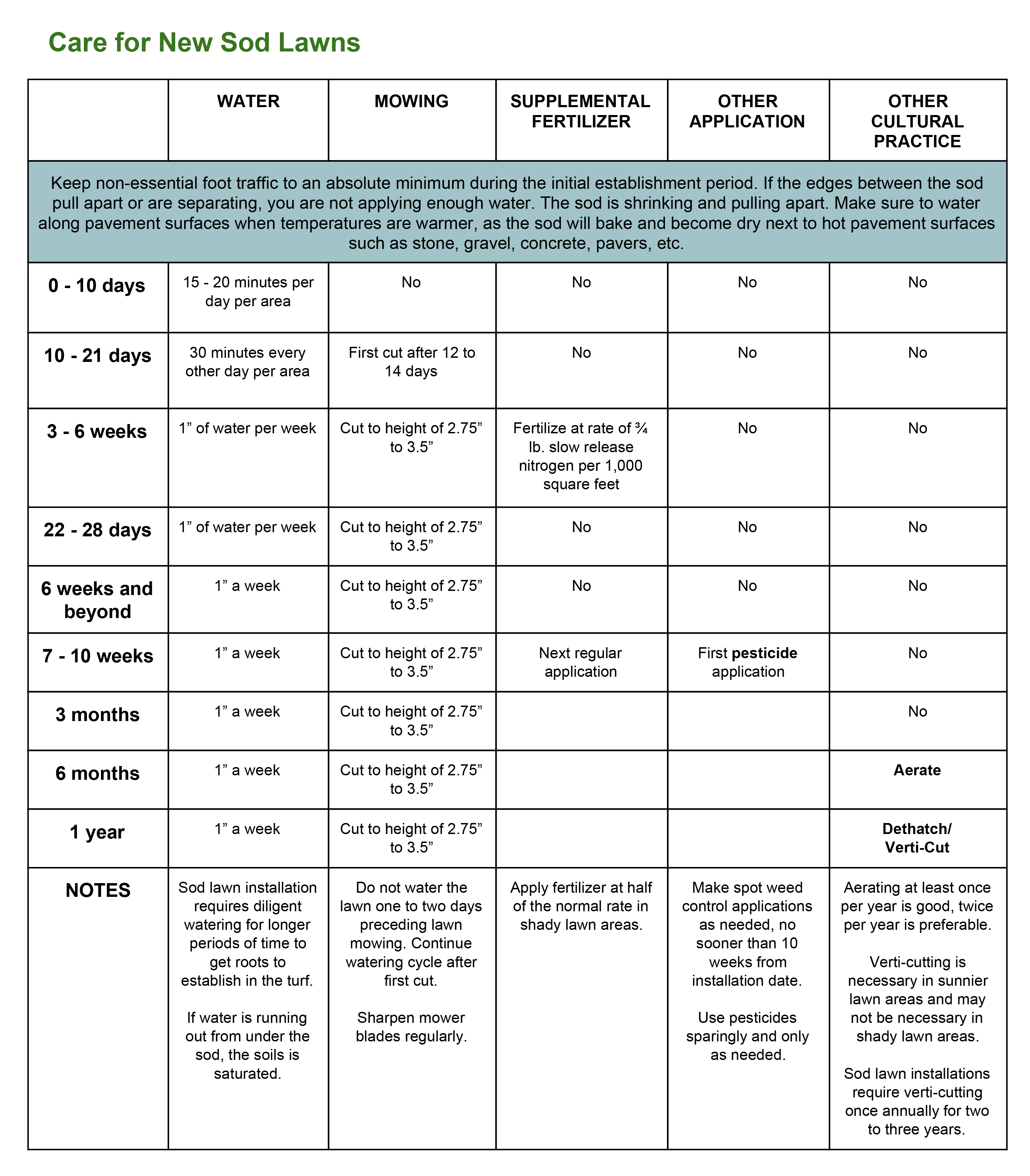Sod Watering Instructions
Your new lawn has been carefully installed, and needs proper continuing maintenance, particularly in the next several weeks, to ensure the success of the installation. Please follow the watering and care instructions below for the next several weeks.
PLEASE NOTE
You may walk on the lawn to move the sprinklers, but keep non-essential foot traffic to an absolute minimum during the initial establishment period.
If the edges between the sod pull apart or are separating, you are not applying enough water. The sod is shrinking and pulling apart.
Do not water at night or late in the evenings. New seedlings are susceptible to diseases, which are encouraged by prolonged periods of being wet.
Make sure to water along pavement surfaces when the temperatures are warmer, as the sod will literally bake next to the hot surface during the establishment.
Maintenance Practices (0-10 days):
Water each day for at least 15 to 20 minutes in each area of lawn (according to how much water your sprinkler emits). Watering a second time each day is recommended if the temperatures are over 65 degrees and sunny. It is important to get the water through the sod and into the soil below the sod. Check to make sure you are watering enough by pulling back the corner of the sod in several places throughout the lawn to make sure the soil below is moist.
Do not fertilize or mow the lawn yet.
Maintenance Practices (10-21 days):
Water every other day for approximately 30 minutes. By watering for longer periods of time, you are encouraging root growth deeper into the soil.
Check to make sure you are watering enough by pulling back the corner of the sod in several places throughout
the lawn to make sure the soil is moist. The sod should be difficult to pull up - do not force it up. The root system is establishing . . . and should not be pulled from the soil. Just tug lightly to assure good rooting. If the lawn is not rooting, you may not be watering enough.
Before watering the lawn, cut the grass as needed. Do not remove more than a third of the grass plant at one time while cutting. For instance, if the grass is 5” tall, do not cut below 3.5” in height. In general, keep the lawn at 2.75” to 3.5” in height. In general, keep the lawn at 2.75” to 3.5” during the establishment. If the lawn is too wet to cut, do not water for one more day and then cut the lawn.
Do not apply fertilizer to the lawn yet.
Maintenance Practices (3 weeks and beyond):
You may begin to cut the lawn as needed. The lawn should be fairly well rooted and can take normal wear and tear.
Water the lawn approximately twice a week making sure to apply 1” of water each week. Use a pie tin or similar container to measure your irrigation by placing it in the path of the sprinkler. Multiply the amount of water in inches by the number of times you water each week to total 1” per week. For instance, 1⁄2” for two waterings equals 1” of total water.
You may apply a balanced turf fertilizer six weeks after installation. Either your lawn care company will apply your fertilizer or you may use a consumer product, such as Scott’s Turf Builder. If you are applying the product, follow the label instructions very carefully. It is recommended that you use a rotary spreader as opposed to a drop spreader. Look for a fertilizer that has a nutrient ratio of 3:1:2, which indicates the amount of nitrogen, phosphorous and potassium (NPK).
Avoid applying herbicides when it is hot and dry. Wait for cooler weather to apply herbicide.

